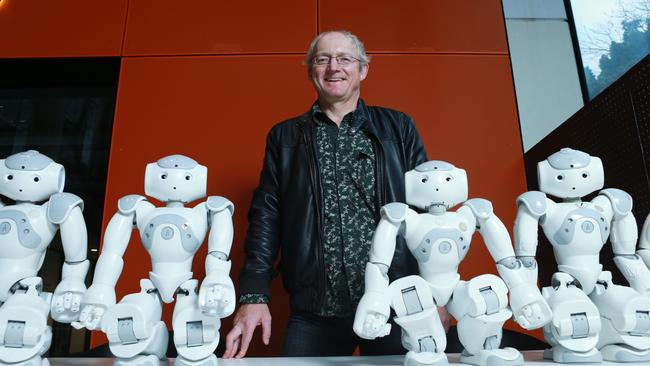Automation: stalling the march of ‘killer robots’
Automation will make life easier but there’s a sinister lining that could redefine warfare, researchers warn.

The rising tide of automation is likely to make our lives a whole lot easier but there’s a sinister lining to this technology-driven nirvana that could well be the end of the world as we know it, according to NICTA’s Toby Walsh.
Professor Walsh, the research leader in Artificial Intelligence and Optimisation at NICTA, is part of an elite group of AI and robotics researchers deeply concerned about the rapid development of autonomous weapons systems, which some contend could play a dangerous role in driving a “third revolution of warfare.”
According to Professor Walsh, weapons systems that operate independently of any human control could become feasible within years unless there was a global consensus for a moratorium on the development of lethal autonomous weapons systems.
The push to halt the evolution of the so-called “killer robots” is set to be a key topic of discussion at this year’s International Joint Conference on Artificial Intelligence (IJCAI) where experts are set to release an open letter to the UN asking for a ban on autonomous weapons systems.
According to the letter, released on Tuesday, while there’s an inherent logic in replacing humans in combat operations with robots, the issue is far more complicated.
“Many arguments have been made for and against autonomous weapons, for example that replacing human soldiers by machines is good by reducing casualties for the owner but bad by thereby lowering the threshold for going to battle,” the letter says.
“The key question for humanity today is whether to start a global AI arms race or to prevent it from starting. If any major military power pushes ahead with AI weapon development, a global arms race is virtually inevitable, and the endpoint of this technological trajectory is obvious: autonomous weapons will become the Kalashnikovs of tomorrow.”
The experts also warn that unlike nuclear weapons that require large scale investment in raw materials, requisite infrastructure and skilled personnel, autonomous weapons can be mass produced relatively efficiently.
The letter has received the backing of Apple co-founder Steve Wozniak, Skype co-founder Jaan Talinn, renowned physicist Stephen Hawking and Tesla founder Elon Musk. All four of these heavyweights in the world of technology and science have recently highlighted the risk posed in a scenario where technology is able to replicate without the need for human guidance.
So how severe an existentialist threat is this for us? According to Professor Walsh, the thing to keep in mind is just how quickly the current rate of technology innovation is moving and whether society on the whole can keep pace with the implications, both good and bad, of the technological change.
“The dystopian visions we have about automation and robots tap into a very ancient fear,” Professor Walsh said, adding that the concerns aren’t entirely misplaced.
“We are right to be concerned, some of these changes that people are talking about will not happen overnight but now is the good time to start thinking about it,” he said.
“Like all technologies there are good futures and bad futures and if we get it wrong we could end up with a bad future.”
As technology rewires the nature of our economies, Professor Walsh said the pace of this change is unprecedented in human history and will require a fundamental rethink of social and regulatory constructs.
“The last transformation required huge changes — we introduced interesting things (labour laws, unions) that were big shifts for a society,” he said.
The current revolution, according to Professor Walsh, is likely to require similar changes.
The one shift Professor Walsh and his colleagues are trying to avoid is the inherent efficiencies of a software-dominated world manifesting on a battlefield, where AI technology is used to sanitise combat, for one side at least.
With the US military the biggest investor in AI development, the researchers face a dilemma of sorts but Professor Walsh said that it’s not a “black and white” issue.
“It’s easy to reposition technology and there are many things AI can help with in battlefield conditions, think of robotic minefield clearance, that’s a wonderful use of the technology, ” he said.
“What we are arguing is that humans must not be taken out the loop when it comes to decision making.”


